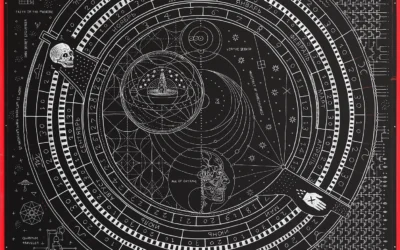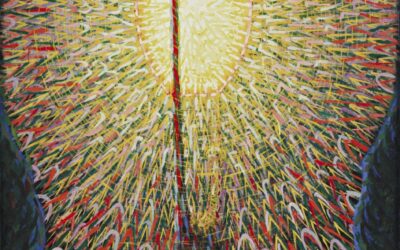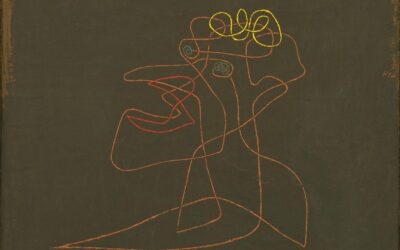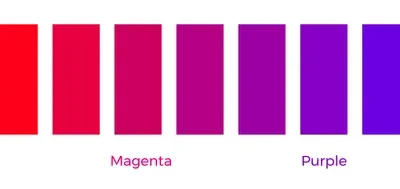What does Red Orrange mean in a Dream?
When the color red-orange appears in a dream, it often carries profound symbolic weight, representing a liminal space between the primal instincts of red and the expansive, illuminating qualities of orange. This hybrid hue suggests an interplay of forces: passion and transformation, desire and enlightenment, vitality and volatility. Red-orange frequently signals an urgent need for balance between action and reflection, between consuming intensity and the necessity for creative or spiritual growth.
From a Jungian perspective, red-orange may emerge as an archetypal motif, symbolizing the powerful energies of individuation. It can reflect the alchemical process of psychological transformation, where the fiery nature of red is tempered by the more ethereal glow of orange, indicating a journey through both destruction and renewal. In this context, red-orange may signify a threshold experience—a moment of initiation where old identities are being burned away to make room for new potentialities.
In dream imagery, red-orange is often associated with fire, molten lava, sunsets, or blood-infused light—symbols that suggest both endings and new beginnings. It can also appear in visions of sacred or ritualistic flames, pointing to a process of purification and renewal. The color may highlight a crucial moment of decision or an awakening to new levels of consciousness. If red-orange appears in the form of clothing, objects, or landscapes, it may suggest a call to action, an increase in life force, or an urgent emotional state requiring attention.
Conversely, red-orange in a negative dream context could indicate overwhelming emotions, uncontrolled passion, or destructive impulses that need to be harnessed. It may warn of burnout, unchecked aggression, or the perils of acting on desire without contemplation. Dreams featuring red-orange may be invitations to explore these tensions and seek a path toward integration and balance.
The Meaning of Red-Orange in Dreams
Dreams featuring red-orange often signal a period of transformation, momentum, or an intense emotional experience. This color in a dream may indicate a need for action, whether that means pursuing a passion, engaging more fully with life, or addressing an unresolved emotional conflict. Red-orange can symbolize courage and confidence, suggesting that the dreamer is in a phase where they must assert themselves or take decisive steps forward.
In some cases, red-orange can highlight an internal struggle between impulse and control. It may suggest a need to balance passion with awareness, as the energy of red-orange can be both empowering and overwhelming. If the color appears in a chaotic or unsettling context, it may reflect feelings of frustration, impatience, or emotional volatility.
In Jungian dream analysis, red-orange might represent the emerging power of the individual will. It could signal the dreamer stepping into their autonomy, navigating the tension between instinct and creativity. This color is often a call to embrace dynamic change while maintaining awareness of how one’s energy is being directed.
Ultimately, red-orange in dreams serves as an indicator of inner fire—whether that fire is fueling progress, creative passion, or emotional upheaval depends on the context of the dream itself.
Somatic Associations with Red-Orange
Red-orange carries a blend of the physiological and psychological effects of both red and orange, creating a unique state of heightened stimulation with a dynamic, action-oriented quality. Somatically, red-orange is associated with movement, drive, and the activation of the body’s energetic systems. It is linked to the sympathetic nervous system, much like red, but with a slightly more expansive and outwardly directed quality due to the influence of orange.
This color can be felt in the body as a warming, mobilizing energy, often associated with excitement, enthusiasm, or the need to express oneself. It is commonly linked to the second chakra in energy healing traditions, which governs creativity, passion, and the integration of emotions with action. Red-orange can stimulate circulation and digestion, bringing energy into the core of the body. In trauma work, this color may reflect a nervous system that is shifting between hyperarousal and a more dynamic engagement with life—suggesting a readiness to act but also a potential for impulsivity or restlessness.
If red represents primal survival energy and orange represents joy and sociability, red-orange exists at the intersection of these forces. It carries both the urgency of red and the expressive qualities of orange, making it a color of motivation, change, and the body’s instinctive responses to excitement or perceived danger.
The Neuroscience of Orange-Red Light
To fully grasp the psychological impact of orange-red, it is essential to first understand how this color affects the brain and the nervous system at a physiological level. Recent advancements in neuroscience and color psychology have provided valuable insights into the complex ways in which different wavelengths of light can modulate neural activity, autonomic arousal, and emotional processing.
Research has shown that exposure to orange-red light has a significant impact on the limbic system, a set of brain structures involved in emotional processing, motivation, and memory formation (Vandewalle et al., 2010). The limbic system includes the amygdala, hippocampus, and anterior cingulate cortex, which work together to evaluate the emotional significance of stimuli, generate affective responses, and regulate autonomic and endocrine functions (Phan et al., 2002).
Intensifying Emotional Arousal and Processing
Studies using functional magnetic resonance imaging (fMRI) have demonstrated that exposure to orange-red light increases activity in the amygdala, a key limbic structure involved in the processing of emotionally salient stimuli, particularly those related to threat, fear, and reward (Vandewalle et al., 2010). The amygdala is highly interconnected with other brain regions involved in emotional processing, such as the orbitofrontal cortex, insula, and ventral striatum, and its activation is associated with heightened emotional arousal, increased sympathetic nervous system activity, and the formation of emotionally charged memories (Phelps & LeDoux, 2005).
The increased amygdala activity induced by orange-red light has been linked to a range of emotional and physiological effects, including heightened feelings of excitement, passion, and intensity, as well as increased heart rate, blood pressure, and skin conductance (Ali, 1972; Wilson, 1966). These findings suggest that exposure to orange-red light may amplify the subjective experience and physiological correlates of strong emotions, both positive and negative, and may contribute to the formation of vivid and long-lasting emotional memories.
Furthermore, orange-red light has been shown to modulate the activity of the anterior cingulate cortex (ACC), another key limbic structure involved in emotional processing and regulation (Vandewalle et al., 2010). The ACC is thought to play a critical role in monitoring and resolving emotional conflicts, integrating cognitive and affective information, and regulating autonomic and endocrine responses to stress (Bush et al., 2000). Studies have found that exposure to orange-red light increases ACC activity, particularly in the dorsal and rostral subdivisions, which are involved in the appraisal and expression of emotions, as well as the regulation of autonomic arousal (Vandewalle et al., 2010).
Enhancing Autonomic Arousal and Physiological Responsiveness
In addition to its effects on the limbic system, orange-red light has been shown to have a significant impact on autonomic nervous system function and physiological arousal. The autonomic nervous system is responsible for regulating involuntary bodily functions, such as heart rate, blood pressure, digestion, and respiration, and is divided into two branches: the sympathetic nervous system, which activates the “fight or flight” response, and the parasympathetic nervous system, which promotes relaxation and restoration (McCorry, 2007).
Research has demonstrated that exposure to orange-red light increases sympathetic nervous system activity, leading to heightened physiological arousal, increased heart rate and blood pressure, and enhanced sensory sensitivity (Ali, 1972; Reeves et al., 1985). These autonomic effects are thought to be mediated by the influence of orange-red light on the hypothalamus, a key limbic structure that regulates homeostatic functions and integrates information from the autonomic nervous system, endocrine system, and other brain regions (Vandewalle et al., 2010).
The heightened sympathetic arousal induced by orange-red light may contribute to the subjective experience of increased energy, alertness, and readiness for action, as well as the enhancement of sensory and perceptual acuity (Berson et al., 2002). These effects may be particularly relevant in situations that require rapid mobilization of physical and mental resources, such as athletic performance, emergency response, or creative expression.
However, chronic or excessive exposure to orange-red light may also lead to states of hyperarousal, overstimulation, and stress, particularly in individuals with heightened sensitivity or pre-existing arousal-related disorders (Mehta & Zhu, 2009). In such cases, the ability to self-regulate and modulate one’s physiological and emotional responses becomes crucial for maintaining health and well-being.
Modulating Higher-Order Cognitive Functions and Self-Regulation
At a higher level of cognitive processing, orange-red light has been shown to influence the activity of the prefrontal cortex (PFC), particularly the dorsolateral and ventromedial subdivisions, which are involved in executive functions, decision-making, and self-regulation (Vandewalle et al., 2010). The PFC is thought to play a critical role in the top-down control of emotions, thoughts, and behaviors, and its interaction with the limbic system is essential for adaptive functioning and mental health (Miller & Cohen, 2001).
Studies using functional near-infrared spectroscopy (fNIRS) have demonstrated that exposure to orange-red light modulates PFC activity, with differential effects depending on the specific wavelength and intensity of the light (Okamoto & Dan, 2005). For example, exposure to shorter wavelengths of orange-red light (around 600 nm) has been associated with increased PFC activation, enhanced cognitive control, and improved performance on tasks requiring sustained attention and working memory (Alkozei et al., 2016). In contrast, exposure to longer wavelengths of orange-red light (around 700 nm) has been linked to decreased PFC activation, reduced cognitive control, and increased risk-taking and impulsive behavior (Alkozei et al., 2016).
These findings suggest that the effects of orange-red light on higher-order cognitive functions and self-regulation are complex and wavelength-dependent, and may involve a delicate balance between the arousing and sedating effects of different parts of the orange-red spectrum. The ability to fine-tune and optimize one’s exposure to orange-red light based on individual needs and goals may be a valuable skill for enhancing cognitive performance, emotional regulation, and overall well-being.
The Symbolism and Archetypes of Orange-Red
Beyond its neurophysiological effects, orange-red carries a rich tapestry of symbolic and archetypal meanings that have shaped human culture and consciousness throughout history. From ancient myths and religious iconography to modern art and literature, orange-red has been imbued with a wide range of associations, reflecting its complex and paradoxical nature as a color of both intensity and transcendence.
The Blood of Christ and the Fires of Purgatory
In the Christian tradition, orange-red holds a central place in the symbolism of the Passion and the redemption of humanity through the sacrifice of Christ. The blood of Christ, often depicted in vivid shades of orange-red, represents the ultimate act of love and the cleansing of sin through the shedding of divine blood (Strachan, 2003). In medieval and Renaissance art, the orange-red blood of Christ is frequently shown flowing from his wounds, particularly from his pierced heart, which becomes the focal point of devotional practices and mystical contemplation (Bynum, 2007).
The orange-red of Christ’s blood is also closely associated with the fires of purgatory, the intermediate state between earth and heaven where the souls of the faithful are purified and made worthy of eternal life (Benedictis, 2003). In Catholic theology, purgatory is often described as a cleansing fire that burns away the dross of sin and worldly attachment, leaving only the pure gold of the redeemed soul (McGrath, 2011). The orange-red flames of purgatory thus become a symbol of the transformative power of divine love, which purges the soul of its imperfections and prepares it for union with God.
For individuals on a path of spiritual growth and self-transformation, the orange-red symbolism of Christ’s blood and the fires of purgatory can serve as a powerful reminder of the necessity of sacrifice, surrender, and the embrace of suffering as a means of purification and transcendence. By meditating on the orange-red wounds of Christ or visualizing oneself being consumed by the flames of divine love, one can cultivate a deeper sense of compassion, humility, and the willingness to let go of ego-driven attachments and desires.
The Dawning of Spiritual Awakening and the Illumination of the Soul
In the Eastern spiritual traditions, particularly in Hinduism and Buddhism, orange-red is often associated with the dawning of spiritual awakening and the illumination of the soul. In the Hindu tantric system, orange-red corresponds to the manipura chakra, the energy center located in the solar plexus that governs personal power, self-esteem, and the transformation of raw emotions into refined spiritual energy (Feuerstein, 2006). When activated and balanced, the manipura chakra is said to radiate an orange-red light that fills the body with vitality, confidence, and the courage to overcome obstacles on the path to self-realization (Judith, 2004).
In Buddhist iconography, orange-red is the color of the rising sun, which symbolizes the dispelling of ignorance and the attainment of enlightenment (Leidy & Thurman, 1998). The Buddha himself is often depicted wearing orange-red robes, which represent the renunciation of worldly attachments and the embrace of the homeless life of a spiritual seeker (Khantipalo, 1982). In Tibetan Buddhism, the orange-red hats worn by certain lineages of lamas symbolize the fiery wisdom and compassion of the enlightened mind, which burns away the veils of illusion and reveals the true nature of reality (Powers, 2007).
For individuals seeking to awaken their spiritual potential and cultivate higher states of consciousness, the orange-red symbolism of the manipura chakra and the rising sun can serve as a powerful catalyst for transformation. By meditating on the orange-red light of the solar plexus or visualizing oneself as a radiant being of wisdom and compassion, one can tap into the vital energy and clarity needed to overcome the challenges of the spiritual path and realize one’s ultimate nature.
The Alchemical Marriage and the Union of Opposites
In the Western esoteric tradition, orange-red is associated with the alchemical process of coniunctio, or the sacred marriage of opposites, which results in the creation of the philosopher’s stone, the ultimate goal of the alchemical quest (Jung, 1963). In alchemical symbolism, orange-red represents the final stage of the magnum opus, the joining of the masculine principle of sulphur (red) with the feminine principle of mercury (white), which gives birth to the androgynous being of light (Fabricius, 1989).
This orange-red coniunctio is often depicted as a hieros gamos, a divine wedding between the king and queen, the sun and moon, or the god and goddess, who unite in a passionate embrace to create the miraculous child of the philosophers (Edinger, 1999). The orange-red stone that emerges from this union is seen as a symbol of the fully individuated self, the inner gold of the psyche that has been purified and transformed through the fires of the alchemical process (Jung, 1963).
For individuals on a path of psychological and spiritual growth, the orange-red symbolism of the alchemical coniunctio can serve as a powerful metaphor for the integration of the conscious and unconscious aspects of the psyche, the reconciliation of opposites within the self, and the creation of a new, transcendent identity. By embracing the paradoxical and often painful process of inner transformation, one can learn to hold the tension of opposites, to marry the light and shadow sides of one’s nature, and to give birth to the philosopher’s stone of wholeness and wisdom.
Therapeutic Applications of Orange-Red
The insights gained from the neuroscience and symbolism of orange-red have important implications for therapeutic practice and personal development strategies. By consciously working with the qualities and archetypes of orange-red, therapists and individuals can harness its transformative potential to navigate intense emotional states, transmute suffering into growth, and achieve higher levels of integration and self-realization.
Navigating Intense Emotional States and Trauma Recovery
Given its effects on the limbic system and emotional processing, orange-red can be a powerful tool for helping individuals navigate intense emotional states and recover from traumatic experiences. In the context of trauma therapy, exposure to orange-red light or the use of orange-red imagery may help to reactivate and process traumatic memories, facilitating the integration of dissociated or repressed material into conscious awareness (Vandewall et al., 2010).
By working with the orange-red energy of the manipura chakra or the alchemical fires of transformation, individuals can learn to alchemize their pain and suffering into sources of strength, resilience, and wisdom. This may involve practices such as breathwork, body-centered psychotherapy, or expressive arts therapy, which allow for the safe and guided expression and release of intense emotions (Levine, 2012).
At the same time, the use of orange-red in trauma therapy must be approached with caution and sensitivity, as overexposure to this intense color may risk retraumatization or emotional overwhelm in vulnerable individuals. The ability to titrate and modulate exposure to orange-red based on the individual’s unique needs and capacity for self-regulation is crucial for ensuring a safe and effective therapeutic process.
Cultivating Personal Power and Assertiveness
The archetypal associations of orange-red with the warrior, the hero, and the leader make it a valuable tool for cultivating personal power, assertiveness, and the ability to take decisive action in the world. By working with orange-red energy or visualizations, individuals can learn to access and channel their inner strength, courage, and vitality in service of their goals and values.
This may involve practices such as martial arts, warrior yoga, or leadership training, which help to build confidence, discipline, and the capacity to assert oneself in challenging situations. The use of orange-red in these contexts can help to activate the solar plexus chakra, the seat of personal power and self-esteem, and to awaken the inner warrior who fights for justice, integrity, and the protection of the vulnerable.
However, the cultivation of personal power through orange-red energy must be balanced with the development of compassion, humility, and the recognition of one’s interconnectedness with others. Without this balance, the orange-red warrior archetype can slide into domination, aggression, and the abuse of power. The key is to harness the transformative fire of orange-red in service of the greater good, channeling one’s strength and vitality toward the creation of a more just, equitable, and compassionate world.
Facilitating Spiritual Awakening and Self-Realization
The symbolism of orange-red as the color of spiritual awakening, the rising sun of enlightenment, and the alchemical union of opposites makes it a powerful catalyst for facilitating higher states of consciousness and self-realization. By meditating on the orange-red light of the rising sun or visualizing oneself as a radiant being of wisdom and compassion, individuals can tap into the transformative energy of spiritual fire and accelerate their journey toward awakening.
This may involve practices such as kundalini yoga, tantric meditation, or the use of orange-red yantras and mandalas, which activate the subtle energy centers of the body and align one’s consciousness with the divine. The orange-red fire of spiritual awakening can help to burn away the veils of illusion, attachment, and ego-clinging, revealing the luminous nature of the true self.
However, the path of spiritual awakening through orange-red energy is not for the faint of heart, as it requires a willingness to confront one’s deepest fears, shadows, and limiting beliefs. The orange-red fire of transformation can be intense, painful, and even destructive at times, as it purifies the soul of its imperfections and prepares it for union with the absolute. The key is to approach this path with courage, discernment, and the guidance of a skilled spiritual teacher who can help navigate the challenges and pitfalls of the journey.
Key Takeaways
- Orange-red light stimulates the limbic system, intensifying emotional arousal, processing, and memory formation.
- Orange-red is associated with the symbolism of Christ’s blood, the fires of purgatory, and spiritual purification.
- In Eastern traditions, orange-red represents the dawning of spiritual awakening and the illumination of the soul.
- The alchemical symbolism of orange-red signifies the sacred marriage of opposites and the creation of the philosopher’s stone.
- Therapeutic applications of orange-red include navigating intense emotions, cultivating personal power, and facilitating spiritual awakening.
Color Psychology























0 Comments